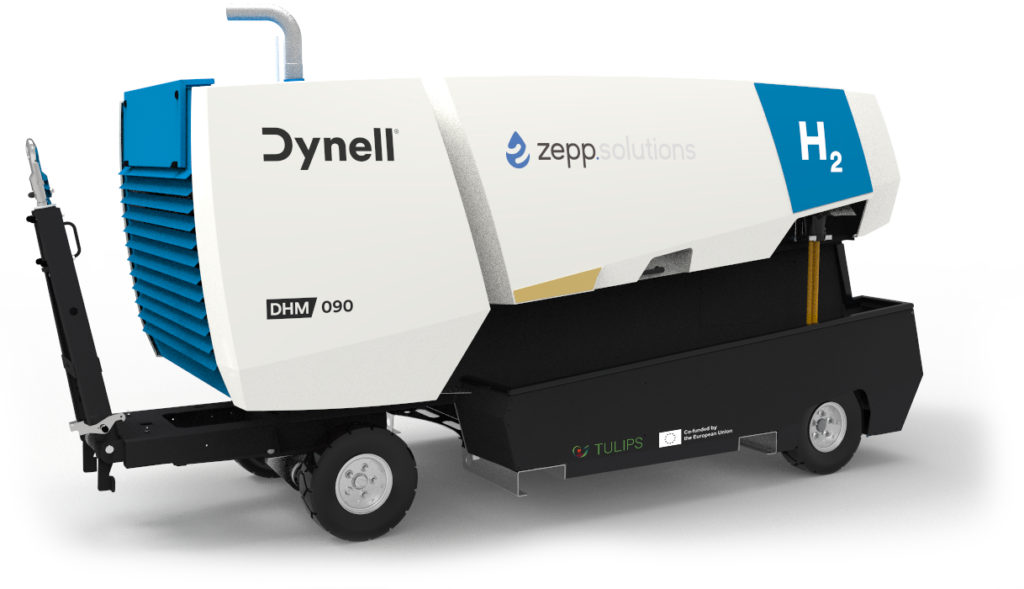May 2024
Currently, most ground support equipment runs on conventional fossil fuels, contributing significantly to greenhouse gas emissions. In response, we decided to test a hydrogen Ground Power Unit (H2-GPU) as part of the TULIPS programme. This represents a pivotal step in decarbonising airside operations. Recently, the specially composed H2-GPU arrived at Schiphol. We will start testing in June. But first, why is an H2-GPU such an interesting development for airports?
Towards sustainable airport operations
In a world increasingly conscious of environmental impact, the air transport industry is not exempt from the push towards sustainability. As part of this global shift, the industry has set ambitious climate change goals such as achieving net-zero carbon emissions by 2050. To reach these targets, every aspect of airline operations must be scrutinised for potential improvements, including airside operations which involve various vehicles and equipment crucial for aircraft turnaround processes.
H2-GPU to cut emissions
A standard GPU powers an aircraft on the ground, allowing it to perform essential functions like loading and unloading without using the aircraft’s engines or auxiliary power unit (APU). Switching to an H2-GPU could drastically cut emissions. Hydrogen fuel cells generate electricity through a reaction between hydrogen and oxygen, producing only water vapor as a byproduct. This shift not only aligns with environmental goals but also substantially reduces the noise pollution typically associated with diesel-powered units.

The advantages of hydrogen technology
The advantages of adopting hydrogen technology in GPUs are manifold. Hydrogen fuel cells do not emit harmful pollutants or greenhouse gases, offering a clean alternative to fossil fuels. Furthermore, the operational integration of HGPUs with existing systems requires minimal changes, which means ground personnel won’t need extensive new training. Another major advantage is that the H2-GPU can be refuelled at airside and thus doesn’t have to deal with long charging times and high increases in logistical movements. This ease of integration, coupled with the reduced environmental impact and lower noise levels, makes H2-GPUs a compelling choice for future airside operations.
Innovative technology
By testing an H2-GPU, TULIPS is not just adhering to industry-wide environmental commitments but is also leading by example in the adoption of innovative technologies that pave the way for a sustainable future in aviation. This initiative is expected to contribute significantly to the industry’s efforts to curb carbon emissions and enhance operational efficiency simultaneously.
